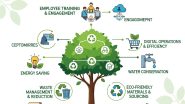What can a well-designed pitch deck do for your business? To begin with, it can inspire the world’s best investors to invest in you.
Having an impressive Pitch Deck is a key component while fundraising for your business. A powerful pitch tells your potential investors that you are ready to raise money. It shows how prepared you are. How well do you know your business model, information about your team and more. For the investor, the Pitch Deck is the first window to your venture.
The Pitch Deck is the first thing that will keep your investors engaged to know more about your business.
Below are 10 powerful tips you should always keep in your mind while making the Pitch Deck. The recommendations have been made in the pitch deck by Sir Ratan Tata.
This will give you enough confidence to design and present a killer Pitch Deck for fundraising for your business.
1. Problem
This is the first slide of your presentation is to make the investor understand about your preparation. This slide will cover the problem of how you are filling the gaps in the market. What burning problem you are solving? A problem with the people can relate and the investor can understand.
The investor will have 3 solid reasons to involve in your venture:-
- There is a clear sense of ROI.
- The investor has experienced the same kind of problem in the past.
- Their expert find it good to go
If your investor falls in these 3 buckets it means you got the lead investor.
2. Solution
- A solution should be very clear and to the point. After the problem, investors always look for the solution.
- Now you have to show your investor how your company and product will address the problem.
- Most of the entrepreneurs focus on their product when instead they need to focus on their customers and the burning problem they are facing.
- Try to use pictures and stories when you describe the solution.
3. Unique selling proposition
- Is your product is unique enough to solve the problem of the customers? Is your product can attract your customer’s attention?
- If the answer is yes! Then you have got the lead investor.
- You need to work on the characteristics which can make your solution a “never-before” solution.
4. COMPETITION & BARRIER TO ENTRY
- An image or a diagram is a good idea to tell the investor about the competitors that you have in your space. How you compare them and where you land with the value proposition.
- You should clearly differentiate your product and company from your competitor which will make your company unique for the investors.
- This uniqueness of your product will also create an entry barrier for the other competitors.
5. Revenue Model
- Now that you have already explained your product/service, you have to talk about how your product will make money.
- You have to discuss how your pricing will fit into the market.
- The investor will keep an eye on how you will undercut the existing solution in the market with your pricing and will your customers be ready to pay that price?
6. Target Market
- This slide will share the data of your ideal customers and how you will position your product in the market.
- This is where you tell the story about the scale of the problem you are solving and the scope of getting success.
- Always remember that the more specific you are with your targets, the more realistic your pitch will be.
- The market size will decide whether you are getting the funds or not because if you are operating a small market then the investor might find the potential ROI small and risky to fund.
7. The product/Service
- In this slide, you have to show the unique features and value to impress the investors.
- This part of your Pitch Deck is all about to show off of your product/service.
- Use pictures, screenshot, descriptions, quotes and testimonials from your previous customers to show how much they love your service/product.
8. Milestone
- Investors like to spend more time to look over in this slide.
- It should have your company project growth over the last and next 3-5 years with the detail of the finances and business model.
- Your economic plan can also be shared in this slide which can include the distribution channel, operational structure and a plan to make money in the future.
- No one can do the prediction where you will be in the next 3 years but the investors would like to see your future plans and the financial knowledge to reach there.
- Do share your profit and loss statement for the last and next 3 years, if possible. This will give your investor a clear picture.
9. Funding so far
- If you already have investors on board, now is the time when you should talk about why they choose to invest in your company.
-
All you have to provide is a summary of the investments. This will help you build credibility and validation of your company.
-
Also mention a realistic number raised through the other investors and the commitments if you expect to fund.
10. The Team
- Here you have to mention the key role and expertise of your core team members.
- Describe the unique value of each team member brings to the company. Also, talk about their seriousness and passion for the project and why they choose to work with your company.
Now that you are very much clear about the Pitch Deck, let’s take a look at some common dos and don’ts which will also help you in fundraising for your business.
| Do's | Don’ts |
| Use bullet points in the slides | Don’t fill your slide with text |
| Do include your contact details | Don’t add too many team members |
| Tell a story while presenting | Do not only focus on stats |
| Do elaborate the slides | Don’t only read the slides |
| Use a powerful template to create the deck | Do not over design |
A solid pitch deck helps you secure the funding and will convert your business idea into a reality.
















